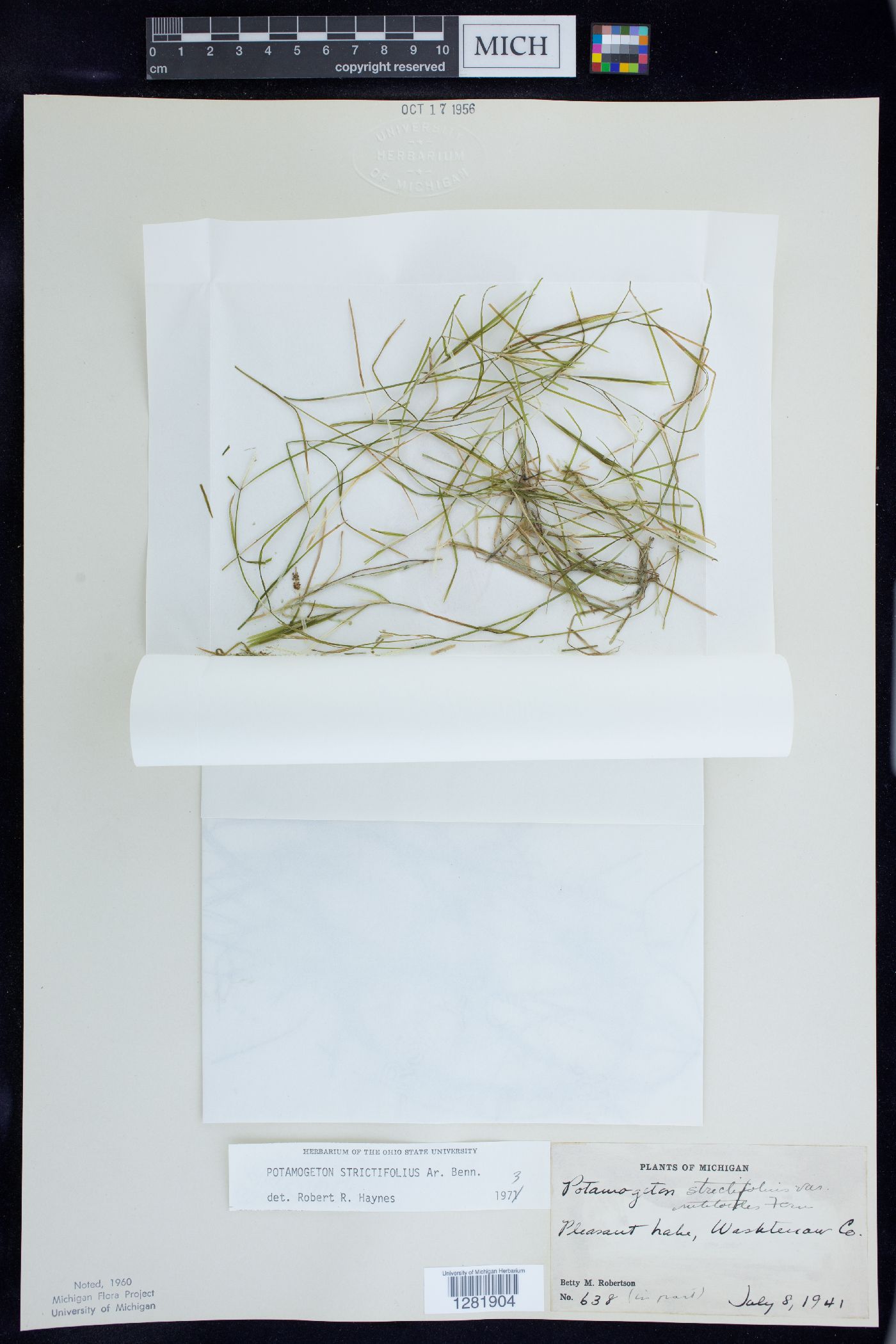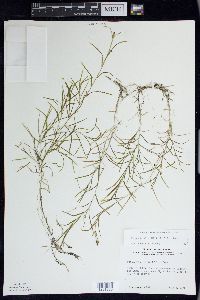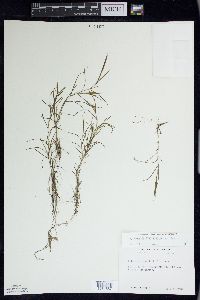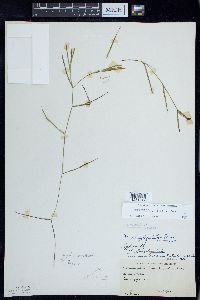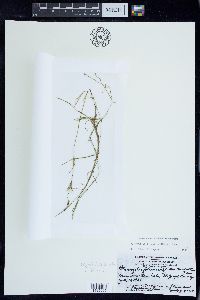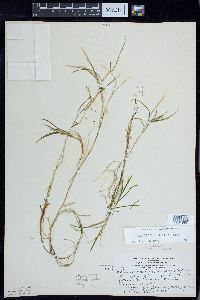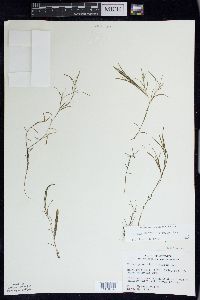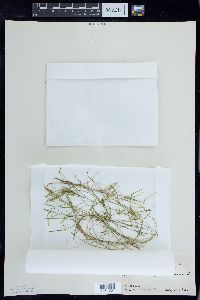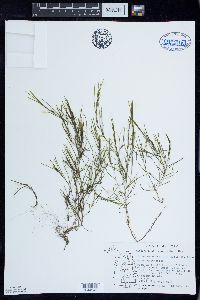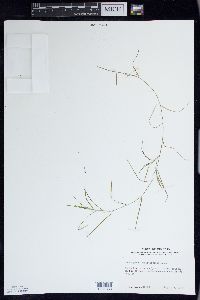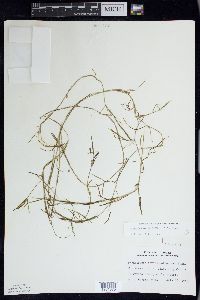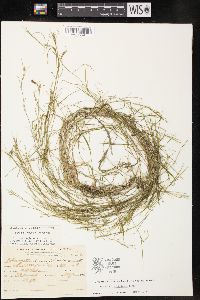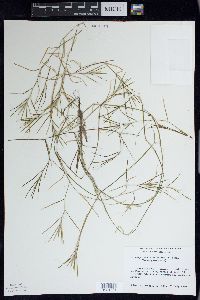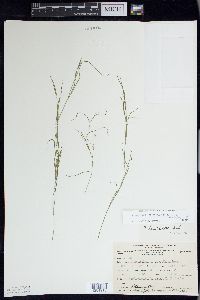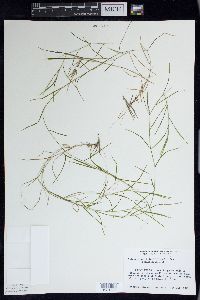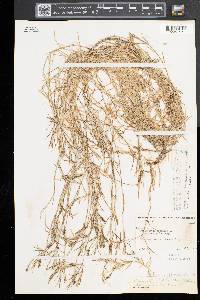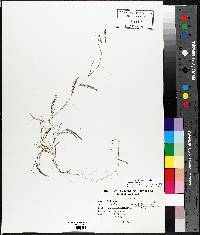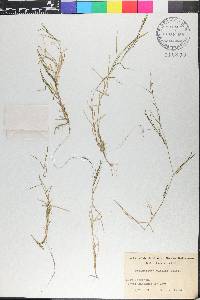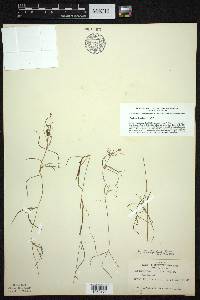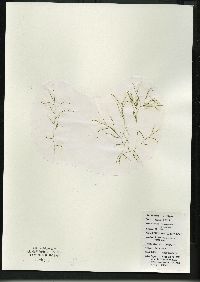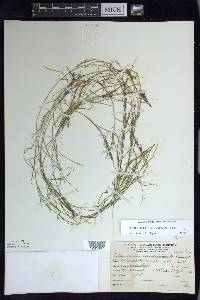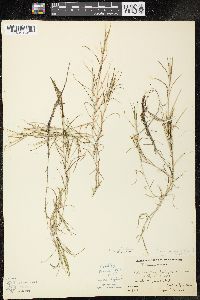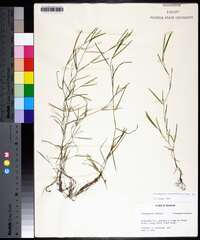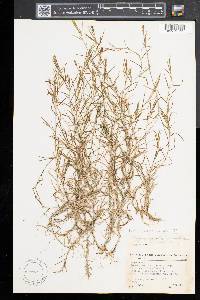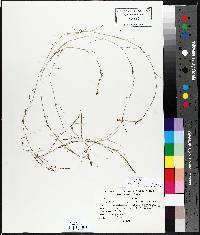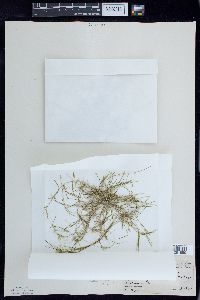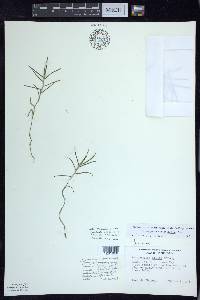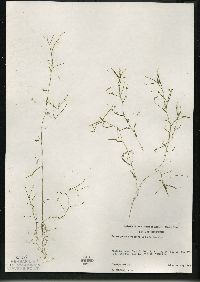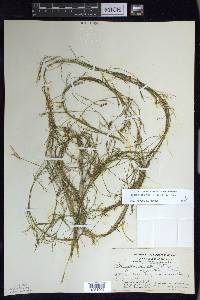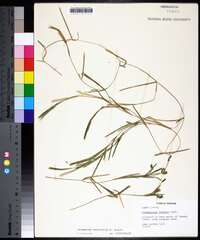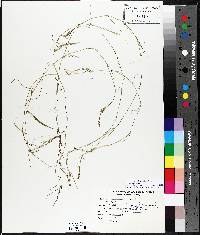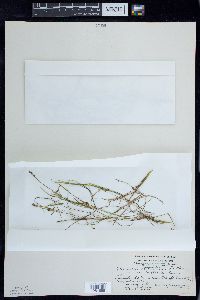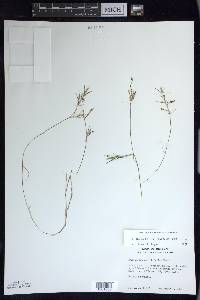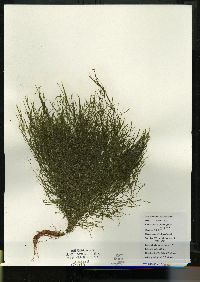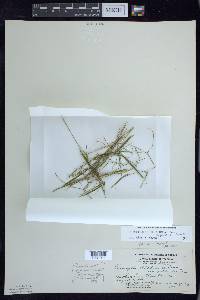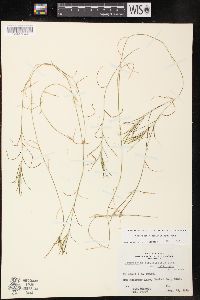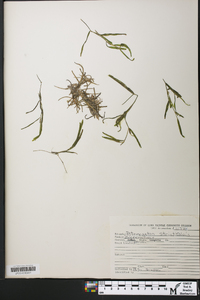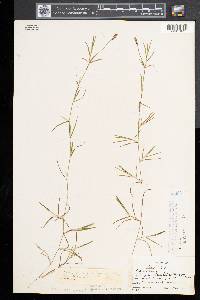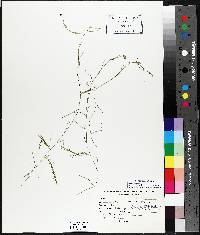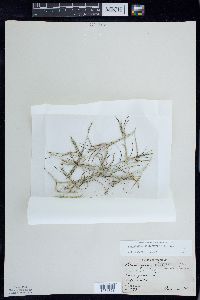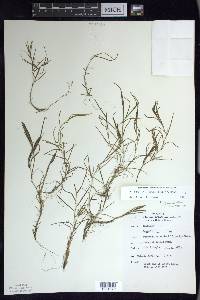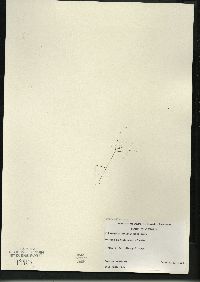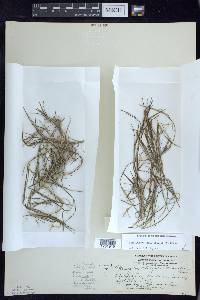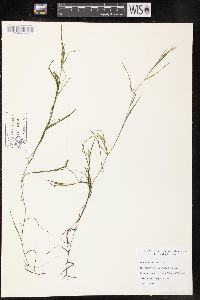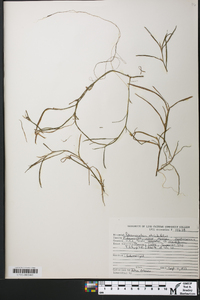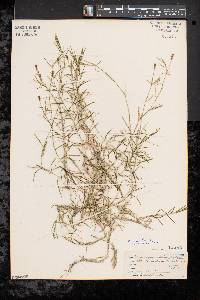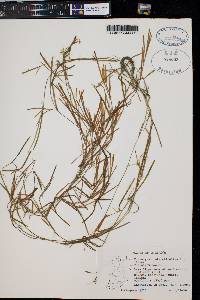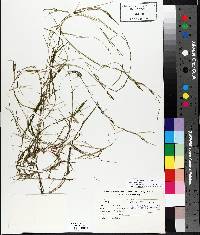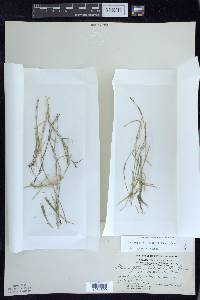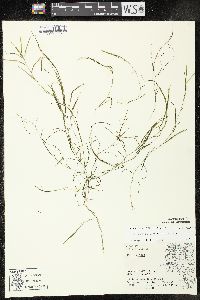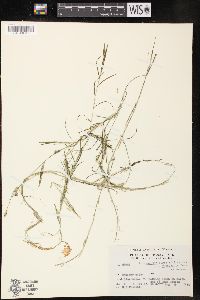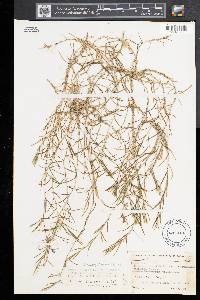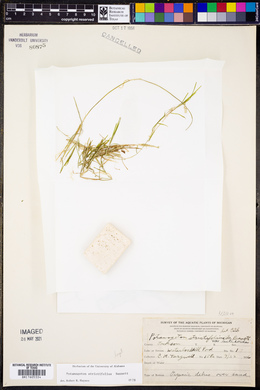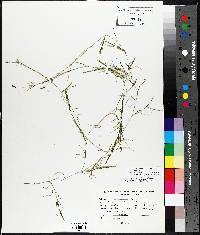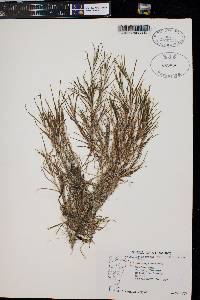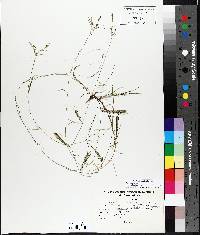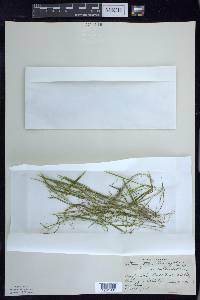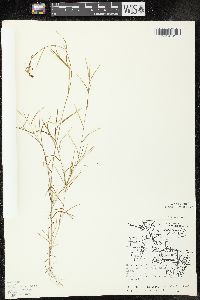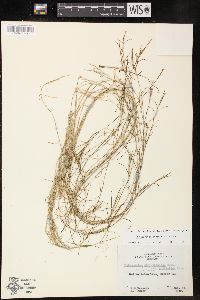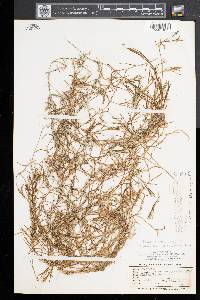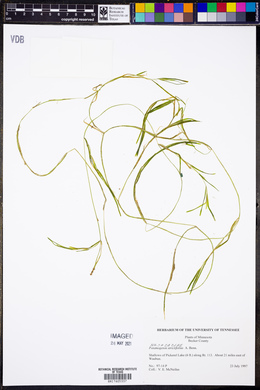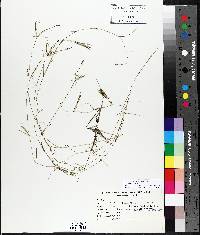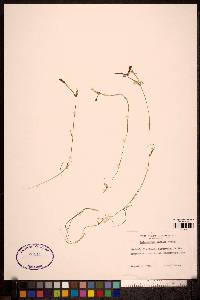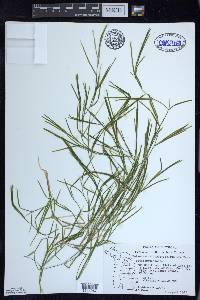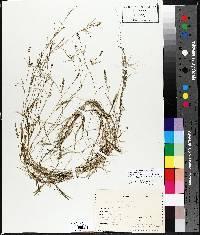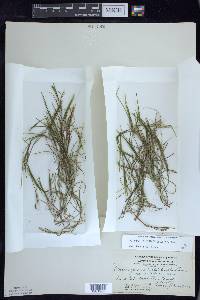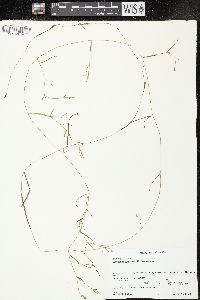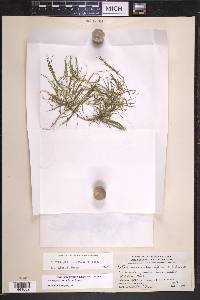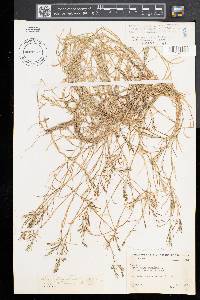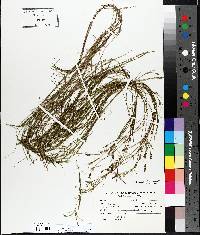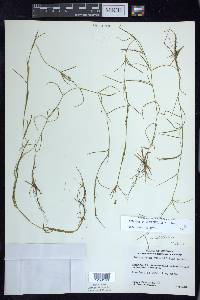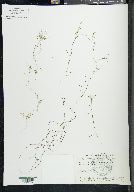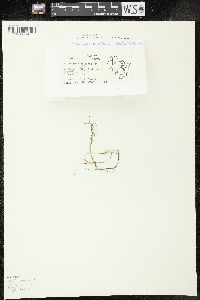Potamogeton strictifolius
|
|
|
|
Family: Potamogetonaceae
narrowleaf pondweed, more...Straight-Leaf Pondweed
[Potamogeton rutilus auct. non Wolfg.] |
Rhizomes absent. Cauline stems terete, without spots, 27--95 cm; glands white, green, greenish brown, or gold, to 0.3 mm diam. Turions terminal or lateral, common, 2.5--4.8 cm ´ 0.8--2.2 mm, soft; leaves ± 2-ranked, flattened with outer and inner leaves in same plane; outer leaves 3--4 per side, base not corrugate, or rarely corrugate, apex acute; inner leaves undifferentiated. Leaves submersed, ± spirally arranged, rigid, sessile; stipules disintegrating, inconspicuous, connate, free from blade, white, not ligulate, 0.6--1.6 cm, fibrous, shredding at tip, apex obtuse; blade green to olive-green, linear, not arcuate, 1.2--6.3 cm ´ 0.6--2 mm, base slightly tapering, without basal lobes, not clasping, margins entire, not crispate, apex not hoodlike, acute to nearly bristle-tipped, rarely obtuse to apiculate, lacunae absent; veins 3--5(--7). Inflorescences unbranched, emersed; peduncles not dimorphic, terminal, erect, rarely recurved, cylindric, rarely slightly clavate, 1--4.5 cm; spike not dimorphic, cylindric, 0.6--1.3 cm. Fruits sessile, green-brown, ovoid, turgid, not abaxially or laterally keeled, 1.9--2.1 ´ 1.3--1.8 mm; beak erect, 0.5--0.8 mm; sides without basal tubercles; embryo with 1 full spiral. 2n = 26. Flowering and fruiting summer--fall. Alkaline waters of lakes and slow-moving streams; 50--2000 m; Alta., Man., N.B., Ont., Que., Sask., Yukon; Conn., Ill., Ind., Maine, Mass., Mich., Minn., Nebr., N.Y., N.Dak., Ohio, Pa., S.Dak., Utah, Vta., Vat., Wis., Wyo. Potamogeton strictifolius is a relatively uncommon species found in alkaline waters. Fairly rigid leaves of the species make floating onto paper unnecessary in the collecting process. The leaves have a tendency to become revolute during the growing season. The species superficially resembles several other species of linear-leaved pondweeds. Consequently, many specimens of this species have been misidentified as other species and vice versa. Thus, literature records are often suspect. One hybrid, Potamogeton strictifolius ´ P. zosteriformis (= P. ´ haynesii Hellquist & G. E. Crow), has been described.
Perennial submersed aquatic herb to 1 m tall Stem: very slender, branched above, jointed, with a pair of nodal glands. Leaves: submersed, more or less arranged spirally, stalkless, translucent, 1 - 6 cm long, 0.5 - 2 mm wide, linear with a slightly tapering base and pointed tip (or bristle-tipped), typically three- to five-veined, and firm. Stipules axillary, free from leaf blade, whitish, rolled up, 7 mm - 1.5 cm long, fibrous, shredding at tip, disintigrating. Inflorescence: an upright, cylindrical spike of whorled flowers, emersed, unbranched, 0.6 - 1.5 cm long, on a terminal stalk. Stalk cylindrical, 1 - 4.5 cm long, slender. Flowers: greenish, tiny. Stamens four. Anthers two-chambered, with four edge-to-edge sepal-like outgrowths. Fruit: an achene, stalkless, greenish brown, 2 - 3 mm long, egg-shaped, plump, not keeled, with an upright, 0.5 - 0.8 mm long beak. Similar species: Very similar to several other species in the genus, and often misidentified. It is advisable to compare details between the species thoroughly. Flowering: mid-June to mid-July Habitat and ecology: Local in the calcareous waters of clean lakes. Occurence in the Chicago region: native Notes: Plants in the genus Potamogeton are very important to wildlife, offering habitat and food for many aquatic animals. Etymology: Potamogeton comes from the Greek words potamos, meaning river, and geiton, meaning neighbor, referring to the habitat of these plants. Strictifolius means straight-leaved. Author: The Morton Arboretum Stems very slender; to 1 m, branched above, commonly with paired glands at the nodes; rhizome scarcely developed; lvs all submersed, linear, rather stiff, 2-6 cm נ0.5-2 mm, acute or attenuate or often bristle-tipped, with bold, vein-like margins, 3-5(7)- veined, the lateral veins very delicate, the midvein not bordered by lacunae or with 1 row on each side in the basal third only; stipular sheaths axillary, free, white, 7-15 mm, closed at base when young, becoming conspicuously fibrous in age; winter-buds commonly produced, flattened, the outer lvs divergent, arcuate, inrolled; peduncles mostly terminal, very slender, usually 3-4 cm, not thickened distally; spike slender,
10-15 mm, with 3 or 4 remote whorls of fls; frs obovoid, 2-3 mm, not keeled; 2n=52. Alkaline ponds and streams; Que. to Mack., s. to Conn., N.Y., O., n. Ind., Minn., and Utah. (P. rutilus, misapplied) Gleason, Henry A. & Cronquist, Arthur J. 1991. Manual of vascular plants of northeastern United States and adjacent Canada. lxxv + 910 pp. ©The New York Botanical Garden. All rights reserved. Used by permission. From Flora of Indiana (1940) by Charles C. Deam There are specimens from only a few of our northwestern lakes. …… Indiana Coefficient of Conservatism: C = 10 Wetland Indicator Status: OBL |

